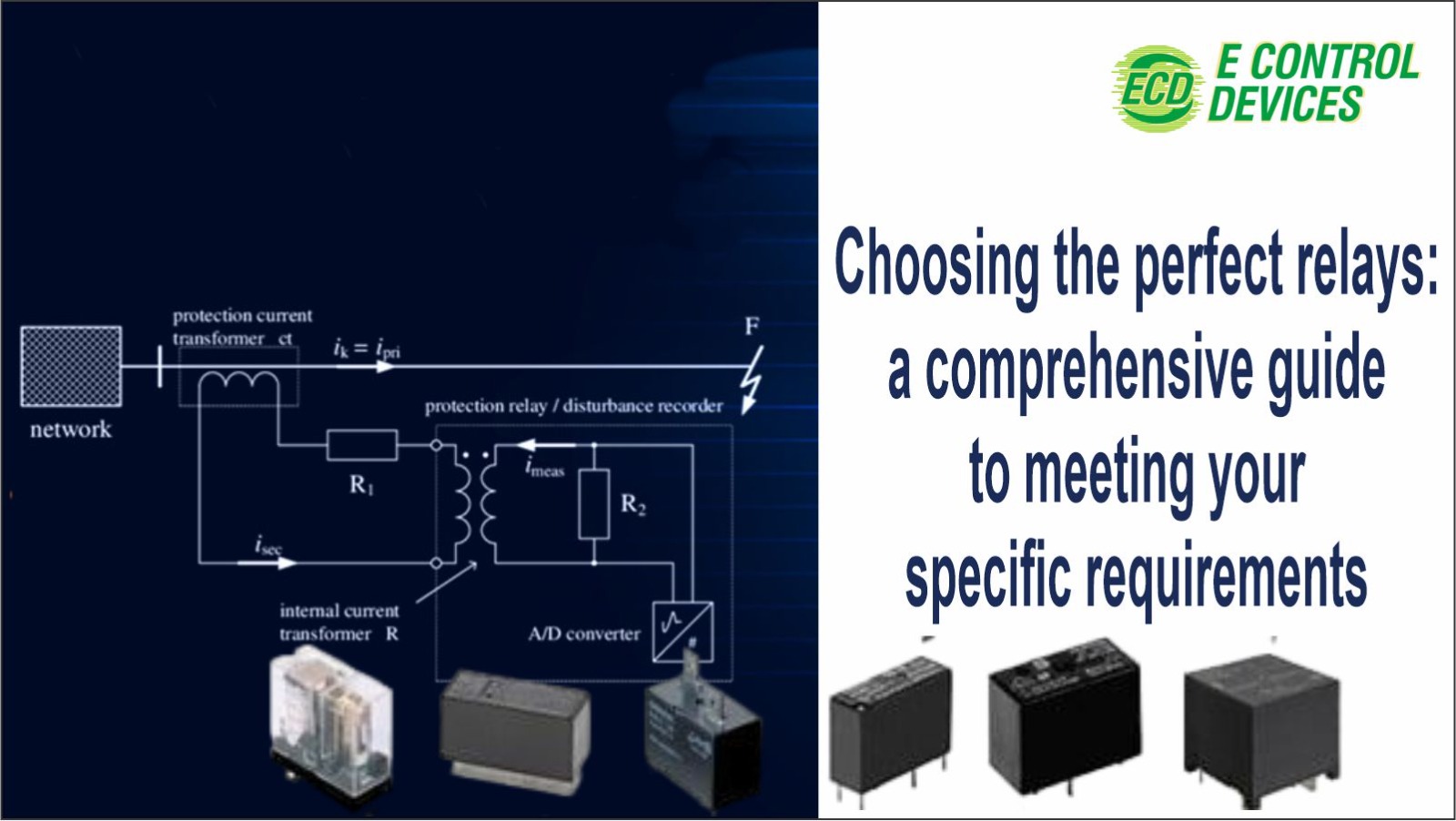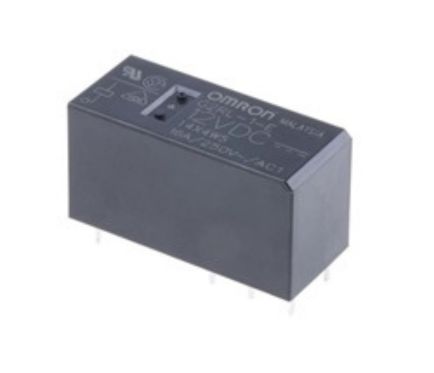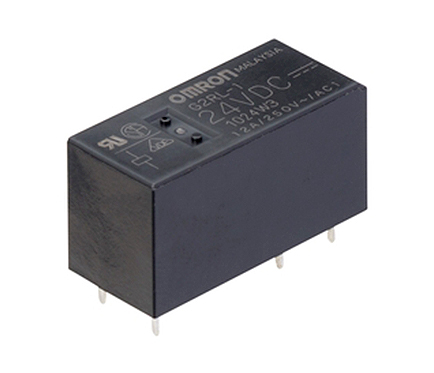Relays are essential components in numerous electrical systems, serving as the gatekeepers of power and control. They play a crucial role in managing the flow of electricity, protecting sensitive equipment, and enabling efficient operation of various devices. However, with a wide range of relay types available in the market, selecting the right relay for your specific requirements can be a daunting task.
This blog acts as a comprehensive guide to help you choose the perfect relays that meet your specific requirements. We will delve into the various factors you need to consider, demystify technical specifications, and offer valuable insights to simplify the selection process.
Understanding Relays
A relay is an electro-mechanical device that operates as a switch, utilising an electromagnet to control the opening and closing of electrical contacts. It acts as an interface between low-power control circuits, such as those found in microcontrollers or electronic control systems, and high-power circuits, typically in the realm of electrical motors, appliances, or industrial machinery.
Types of Relays and Their Applications
Relays come in various types, each designed for specific applications and operating conditions. Some common types of relays include:
1. Electromechanical Relays
These automotive relays use an electromagnetic coil to control mechanical contacts. They are versatile and widely used in applications such as power distribution, automotive systems, industrial automation, and control panels.
2. Solid-State Relays (SSRs)
Unlike electromechanical relays, SSRs use semiconductor switching elements, such as thyristors or transistors, to perform the switching operation. SSRs are known for their fast response time, high switching frequency, and silent operation. They are commonly used in applications where silent operation, long lifespan, or resistance to mechanical wear are essential, such as in medical equipment, HVAC systems, and digital control systems.
3. Reed Relays
Reed relays utilise magnetic fields to control reed switches enclosed in a glass tube. When the coil is energised, the reed switch makes or breaks the electrical connection. Reed relays are often found in applications that require low power consumption, fast switching times, and high reliability, including telecommunications, test equipment, and measurement devices.
4. Protective Relays
These relays are specifically designed to protect electrical systems and equipment from faults or abnormal conditions. They monitor parameters such as voltage, current, frequency, and temperature, and can trigger alarms, shut down circuits, or activate protective measures to prevent damage.
Start with assessing your requirements
Identifying your specific relay needs is the crucial first step in selecting the perfect relay. Consider the purpose of the relay, the required voltage and current ratings, and any specific features or functions necessary for your application.
Next, analyse the electrical system and load characteristics. Examine the power source, load type, and operating conditions to determine the appropriate relay specifications. Evaluate factors such as voltage levels, current fluctuations, and switching frequency to ensure compatibility and optimal performance.
Exploring Relay Specifications
#Understanding relay ratings and terminology
Relay ratings and terminology play a crucial role in selecting the right relay. Familiarising yourself with terms like NO (normally open) and NC (normally closed) contacts, as well as terms like Form A, Form B, and Form C contacts, will help you navigate relay specifications effectively.
#Voltage and current considerations
Voltage and current requirements are vital factors to assess when choosing a relay. Ensure that the relay’s voltage rating matches your application’s voltage levels to prevent damage or malfunction. Similarly, consider the current-carrying capacity of the relay to handle the expected load without exceeding its limits.
#Contact configurations and switching capabilities
Different contact configurations, such as SPST (single-pole single-throw), SPDT (single-pole double-throw), and DPDT (double-pole double-throw), offer varying switching options.
#Coil characteristics and power requirements
Relay coils require an appropriate voltage supply to activate the switching mechanism. Pay attention to the coil voltage and power requirements specified by the relay. Consider factors such as coil resistance, coil current, and power consumption to ensure compatibility with your power source and control circuitry.
Researching Relay Options
When it comes to selecting relays that meet your specific requirements, thorough research is essential. Here are some key aspects to consider during your research process:
- Start by researching reputable relay manufacturers and suppliers. Look for well-established companies with a proven track record of delivering high-quality products. Reading customer reviews and seeking recommendations from industry professionals can provide valuable insights.
- Evaluating reliability and quality factors is crucial. Examine the reliability history of different relay models and consider factors such as durability, resistance to environmental conditions, and performance under varying loads. Look for relays that have undergone rigorous testing and have certifications to ensure their quality.
- Comparing available relay models and series is necessary to find the one that best suits your needs. Assess their technical specifications, such as voltage and current ratings, contact configurations, and switching capabilities. Consider how well they align with your specific application requirements.
- While quality is important, considering cost-effectiveness and budget constraints is equally vital. Compare the prices of different relay options and weigh them against their features and performance. Look for a balance between affordability and long-term reliability to make an informed decision.
Conclusion
To ensure a successful selection process, consider additional factors. Safety features and certifications should be prioritised to protect both the system and personnel. Size, form factor, and mounting options must be compatible with your installation requirements. Assessing future expansion and scalability needs will help you select relays that accommodate potential growth. Lastly, availability and technical support are crucial for prompt assistance and maintenance.
Remember, selecting relays based on your specific requirements will lead to optimised performance and longevity. For further research, consult additional resources from reputable sources to enhance your understanding.Happy relay selection and may your electrical systems operate flawlessly!




